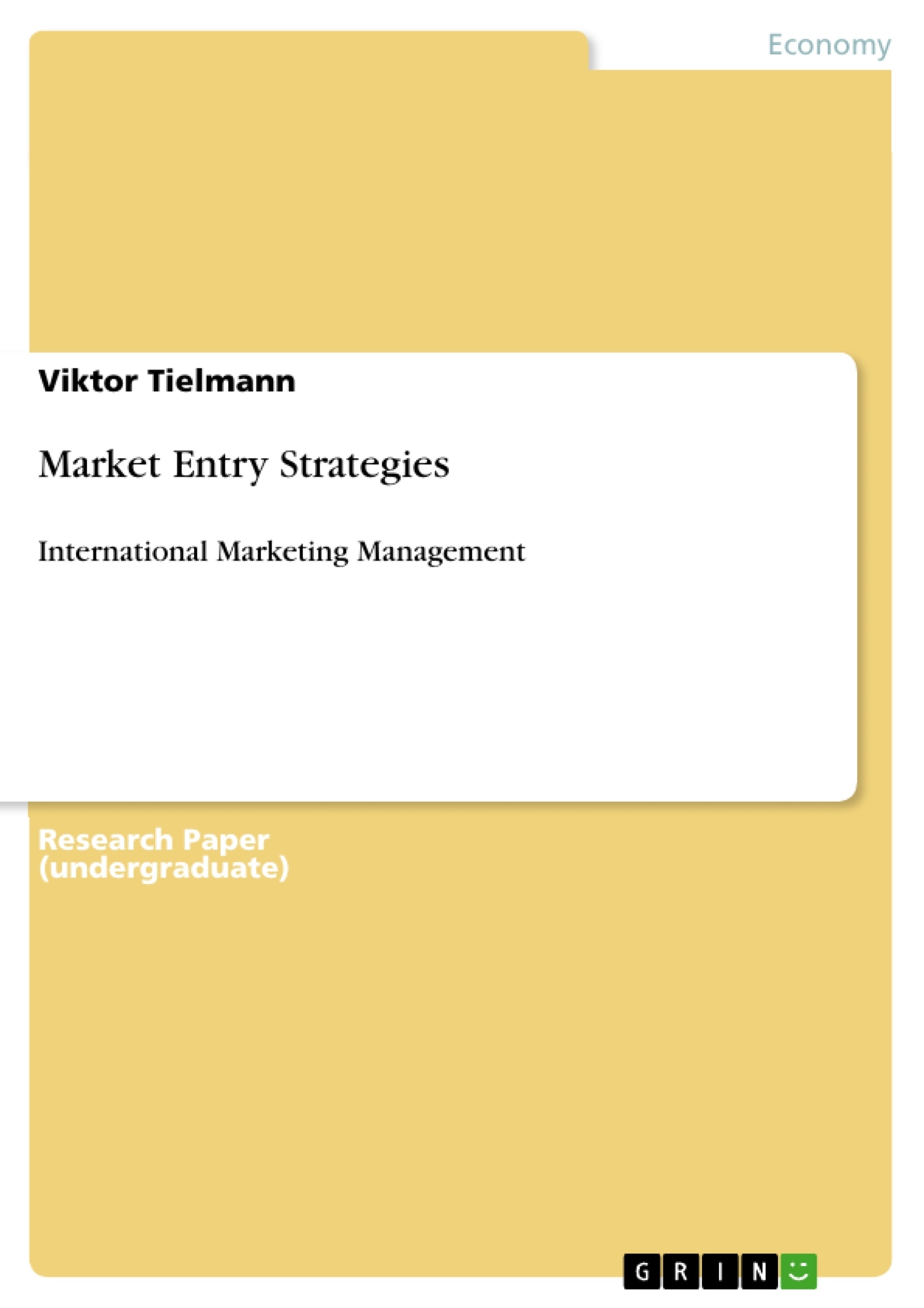Globalization has increased the competition amongst firms. There are more and more companies which are motivated to conquer foreign markets and enlarge their presence on these markets. For multiple reasons, companies adopt modes to enter foreign markets and find new channels of distribution. Choosing the right and appropriate market entry strategy has a growing importance. As a matter of fact, companies should align their strategy to their objectives and adapt them to the foreign markets environment. There are numerous different entry strategies which are all linked to different entry modes, different amounts of risks or costs. From the least costly mode to the most expensive one we distinguish three main strategies: Export is characterized by the transportation of finished goods from one country to another. The distribution on site is done by an intermediary or by foreign based distributors or agents. Joint Venturing includes different characteristics of various joint contracts with firms to produce or promote services or products. Direct investment is, when a company decides to invest directly into a foreign country by either establish an assembly operation, a wholly-owned operation as well as a merge or an acquisition. Each of the market entry strategy has both, advantages and disadvantages. The less costly the strategy is, the less control the company has over the distribution channel. Consequently, the company depends more or less on foreign institutions or foreign partners. All in all a company has to figure out for itself which strategy to choose, according to its particular situation, financial as well as economical and environmental. Therefore, before entering a market, a previous comprehensive research and analysis of the target market and its economic environment is indispensable to achieve a successful launch into an unknown market.
Inhaltsverzeichnis (Table of Contents)
- Management Summary
- Introduction
- Fundamentals of Market Entry Strategies
- Reasons for companies to go international
- Reactive reasons
- Proactive reasons
- Deciding which markets to enter
- Reasons for companies to go international
- Analysis of Market Entry Strategies
- Exporting
- Indirect exporting
- Direct exporting
- Joint Venturing
- Licensing
- Contract manufacturing
- Management Contracting
- Joint ownership
- Franchising
- Direct Investment
- Assembly
- Wholly-owned subsidiary
- Merger and Acquisition
- Exporting
- Conclusion
Zielsetzung und Themenschwerpunkte (Objectives and Key Themes)
This paper aims to analyze and interpret various market entry strategies, highlighting their advantages and disadvantages. The objective is to provide a comprehensive understanding of the different approaches companies use to enter foreign markets and to identify the most suitable strategy for diverse situations and company models.
- Reasons for companies to go international
- Different market entry strategies
- Advantages and disadvantages of each strategy
- Cost and risk associated with each strategy
- Factors to consider when choosing a market entry strategy
Zusammenfassung der Kapitel (Chapter Summaries)
The paper begins by outlining the fundamental reasons behind companies going international, categorized as reactive and proactive. The chapter explores a range of factors that motivate companies to expand their operations to foreign markets, including internal growth, competition, and changes in the economic or political environment.
The subsequent chapter provides a comprehensive overview of various market entry strategies, starting with exporting, both direct and indirect. It delves into joint venturing, including licensing, contract manufacturing, management contracting, and joint ownership. The paper then discusses franchising and direct investment, including assembly, wholly-owned subsidiaries, and mergers and acquisitions.
Schlüsselwörter (Keywords)
The key themes and concepts discussed in the paper include market entry strategies, internationalization, globalization, exporting, joint venturing, franchising, direct investment, reactive and proactive reasons, advantages and disadvantages, cost and risk analysis, and strategic decision-making.
- Quote paper
- Viktor Tielmann (Author), 2010, Market Entry Strategies, Munich, GRIN Verlag, https://www.grin.com/document/154541



